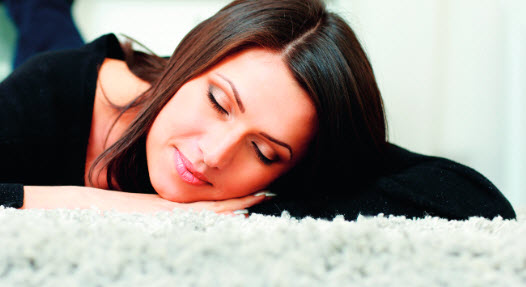
While carpet cleaning may seem like a simple task that requires little training, several factors come into play that can make a big difference in how your carpet looks after cleaning. When you choose a company who understands your carpet you will get better results.
There are no Easy Answers
Some of the most common questions people ask about carpet cleaning includes, “Will the spots come back?”, “Will the dents from the furniture come out?”, “Will the traffic areas look better after it’s done?”, and “Will these stains come out?” The answer to these and other questions requires knowledge and experience.
Carpet can be made with a variety of fibers, each having its own cleaning characteristics. In addition, every fiber handles traffic and wear in its own unique way. Some soils that are easy to remove from one carpet may permanently stain another. Then there is the construction of the carpet. Loop pile, friezé, shag, saxony, velvet plush – all of these styles will respond to traffic in different ways. The quality and density of the cushion is another factor. Even the unique way the pile yarns are twisted and how tightly packed they are in the carpet backing makes a difference in wearability and cleanability.
Questions an Experienced Cleaner will Ask
An experienced cleaner will assess the condition of your carpet, asking: What is the age of the carpet? How was it cleaned in the past, and how often? Was protector applied during the last cleaning? How old are the spots, spills and stains, and have you tried anything to clean them?
With all of these variables, how can we possibly know what to expect from a carpet cleaning? Unfortunately, it’s not an exact science. BUT there are some things experienced cleaners know about carpet, fibers, soil and stains that give them a clue as to what they can anticipate from the cleaning process. Perhaps the most important consideration is the type of fiber. Just because they are all soft and fluffy does not mean they are all the same.
An experienced cleaner is trained to identify types of fibers and use their knowledge of that fiber’s characteristics to anticipate potential challenges. Here are a few examples:
- If a carpet is wool you know that it has excellent resilience, so those crushed traffic areas and furniture indentations have a good chance of coming out. But wool is more easily stained by proteins than other fibers, so some foods, pet urine and other protein sources like blood will be difficult to remove.
- Olefin carpets do not have the resiliency of wool, so high traffic areas tend to pack down and lose that fluffy texture over time. However, Olefin has excellent stain-resistance and color-fastness.
- Stain-resist nylon has excellent resilience and good stain and soil repellency, so carpets made with nylon tend to be the best overall performers. However, depending on how the fiber was dyed, Nylon may be bleached by some household chemicals or sunlight.
- Polyester fibers have an affinity for oily soils, so food or petroleum grease spots will be more difficult to remove. But Polyester, like Olefin, is very resistant to stains and bleaching.
The bottom line is that how the carpet looks after cleaning will depend on some factors out of our control. But you can be assured A Cleaner Carpet Cleaner will produce the best results you can get when we clean your carpets.

